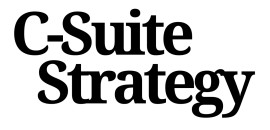
Understanding the true drivers of cogs in cpg
Pinpointing What Really Drives Cost of Goods Sold
For CPG companies, understanding the true drivers behind cost of goods sold (COGS) is foundational to sustainable growth. It’s not just about tracking expenses—it’s about uncovering the factors that impact costs across the entire supply chain, from sourcing to shelf availability. Many CPG brands focus on headline numbers, but the real opportunity lies in dissecting the details that shape cost structures and, ultimately, profit margins.
- Raw materials and ingredient sourcing: Fluctuations in commodity prices, supplier reliability, and global market shifts can all impact the cost of products. Proactive inventory management and supplier diversification help CPG businesses manage these variables.
- Manufacturing and production efficiency: Labor, energy, and process optimization are key. Streamlining operations and investing in chain efficiency can reduce waste and improve cash flow.
- Packaging and logistics: The journey from factory to retail shelf is filled with hidden costs. Transportation, warehousing, and packaging choices directly affect both costs and shelf availability.
- Trade promotion and trade spend: Discounts, allowances, and promotional activities are significant contributors to COGS. Data-driven decision making can help CPG companies maximize the return on these investments.
It’s essential to recognize that COGS is not a static figure. Real time data and analytics can reveal patterns in costs, sales, and inventory that would otherwise go unnoticed. This level of transparency empowers management to make informed decisions that protect profit margins and support long-term business objectives.
For those looking to deepen their understanding of how operational energy and efficiency impact cost structures, this guide to optimizing business energy for strategic success offers valuable insights.
By pinpointing the true drivers of COGS, CPG brands lay the groundwork for aligning cost optimization with broader strategic goals, leveraging analytics, and building resilient supply chains. These steps are crucial for maintaining market share and ensuring that products remain competitive on the shelf.
Aligning cogs optimization with long-term strategy
Strategic Alignment: Beyond Immediate Cost Reductions
For CPG companies, optimizing cost of goods sold (COGS) is not just about cutting costs. It’s about aligning every cost decision with the broader business strategy. When COGS optimization is viewed through a long-term lens, it supports sustainable growth, protects profit margins, and strengthens brand equity in a competitive market.
- Connect COGS to Brand Value: Every cost decision impacts product quality, shelf availability, and ultimately, the perception of your brands. Reducing costs at the expense of quality can erode market share and damage trust with retail partners and consumers.
- Balance Short-Term Gains with Long-Term Goals: While it’s tempting to focus on immediate cash flow improvements, sustainable CPG business growth comes from investments in supply chain efficiency, inventory management, and data-driven decision making. These investments help CPG brands maintain consistent product availability and support premium pricing strategies.
- Integrate COGS Optimization into Business Development: Embedding cost optimization into your business development approach ensures that every new product, trade promotion, or market expansion is evaluated not just for sales potential, but also for its impact on cost structure and profit margins. For further insights on sustainable business development, see enhancing business development through sustainable strategies.
Ultimately, aligning COGS optimization with long-term strategy requires cross-functional management, real-time data visibility, and a culture that values both efficiency and innovation. This approach helps CPG companies build resilient brands, optimize trade spend, and drive sustainable growth in a dynamic retail environment.
Leveraging data analytics for cost transparency
Unlocking Cost Transparency with Data-Driven Insights
For CPG companies, the ability to see and understand costs in real time is no longer a luxury. It is a necessity for driving sustainable growth and protecting profit margins. Data analytics is transforming how brands manage cost of goods sold (COGS), enabling more precise decision making across the supply chain and sales channels.
Modern CPG businesses face complex cost structures, with variables ranging from raw material prices to trade spend and inventory management. By leveraging advanced analytics, companies can:
- Track costs at every stage of the supply chain, from sourcing to shelf availability
- Identify inefficiencies and cash flow leaks in real time
- Optimize trade promotion and pricing strategies based on actual sales and market share data
- Improve inventory management to reduce excess goods sold and minimize waste
Data-driven approaches help CPG brands move beyond traditional, backward-looking reporting. Instead, they enable proactive management of cost drivers, supporting faster response to market changes and retailer demands. This shift is crucial for maintaining shelf presence and competitive pricing, especially as retail environments evolve.
Integrating data analytics also supports cross-functional collaboration. When finance, supply chain, and sales teams share access to the same time data, it becomes easier to align on business priorities and execute cost optimization strategies effectively. This alignment is essential for building a resilient CPG business that can adapt to both short-term pressures and long-term strategic goals.
For leaders looking to deepen their digital capabilities, exploring digital transformation in modern enterprises can offer practical guidance on embedding analytics into core management processes.
Ultimately, embracing data-driven transparency empowers CPG companies to protect profit margins, improve chain efficiency, and drive sustainable growth in a competitive market.
Building cross-functional teams for effective execution
Driving Execution with Unified Teams
For cpg companies, optimizing cogs is not just a finance or supply chain issue—it’s a business-wide priority. The complexity of costs, from raw materials to shelf availability, demands that teams across sales, procurement, finance, and operations work together. Siloed decision making can lead to missed opportunities and inefficiencies, especially when real time data and market signals are not shared.- Cross-functional collaboration: Bringing together diverse expertise helps cpg brands identify cost drivers and uncover ways to improve chain efficiency. For example, sales teams can provide insights on trade promotion effectiveness, while supply chain experts can highlight opportunities for inventory management improvements.
- Shared goals and metrics: Aligning teams around clear objectives—such as reducing cost goods sold or improving cash flow—ensures everyone is working towards sustainable profit margins. This alignment also helps cpg businesses respond quickly to shifts in market demand or supplier pricing.
- Transparent communication: Regular updates on costs, product performance, and market trends help teams make data driven decisions. When all stakeholders have access to the same time data, it’s easier to balance cost pressures with the need to maintain product quality and brand reputation.
Balancing supplier relationships and cost pressures
Strategic Supplier Partnerships for Resilient COGS
In the consumer packaged goods (cpg) sector, supplier relationships are a core lever for managing costs and ensuring reliable shelf availability. The balance between negotiating for lower cost of goods sold (cogs) and maintaining strong supplier partnerships is delicate but essential for sustainable growth. When cpg companies focus solely on price, they risk supply chain disruptions, reduced product quality, and ultimately, lost market share. Instead, a strategic approach to supplier management can help cpg brands achieve both cost efficiency and business resilience.- Transparent Collaboration: Open communication with suppliers about cost drivers, demand forecasts, and inventory management can unlock joint efficiencies. Sharing real time data on sales and shelf performance helps both parties optimize production schedules and reduce excess inventory, supporting cash flow and profit margins.
- Value Beyond Price: Leading cpg companies look beyond immediate cost reductions. They assess suppliers on their ability to support innovation, improve chain efficiency, and adapt to market changes. This broader perspective can help secure better terms over time and enhance the overall value delivered to the business.
- Risk Mitigation: Diversifying the supplier base and building contingency plans protect against supply shocks. This approach not only stabilizes costs but also ensures products remain available on the shelf, supporting sales and brand reputation.
- Data-Driven Negotiations: Leveraging data analytics from previous sections enables more informed decision making during supplier negotiations. Understanding the true cost structure of goods sold and the impact of trade spend empowers cpg brands to negotiate from a position of strength.
Embedding cogs optimization into organizational culture
Making Cost Optimization a Habit, Not a Project
For cpg companies, embedding cost of goods sold (cogs) optimization into the organizational culture is what transforms one-off savings into lasting business value. When cost management becomes a shared mindset, it drives better decision making across every function, from supply chain to sales and marketing. This shift is essential for sustainable growth and stronger profit margins in a competitive market.
- Leadership sets the tone: Senior management must consistently communicate that optimizing costs is not just a finance initiative. It’s a core part of the cpg business strategy, influencing everything from product innovation to shelf availability and trade promotion planning.
- Transparency builds trust: Sharing real time data on costs, inventory management, and trade spend helps teams understand the true drivers of goods sold. This transparency encourages cross-functional collaboration and empowers employees to identify opportunities for chain efficiency and cash flow improvement.
- Rewarding the right behaviors: Recognize teams and individuals who contribute to cost optimization, whether through smarter supplier negotiations, reducing waste, or improving product shelf performance. Incentives aligned with cost goals help cpg brands sustain momentum over time.
- Continuous learning: Encourage teams to regularly review cost data and market trends. Learning from both successes and setbacks helps companies adapt quickly and maintain a data driven approach to cogs management.
When cogs optimization becomes part of the daily conversation, cpg companies are better positioned to protect profit margins, improve cash flow, and grow market share. This cultural shift doesn’t happen overnight, but it’s a critical investment for any brand aiming to thrive on the retail shelf and beyond.














